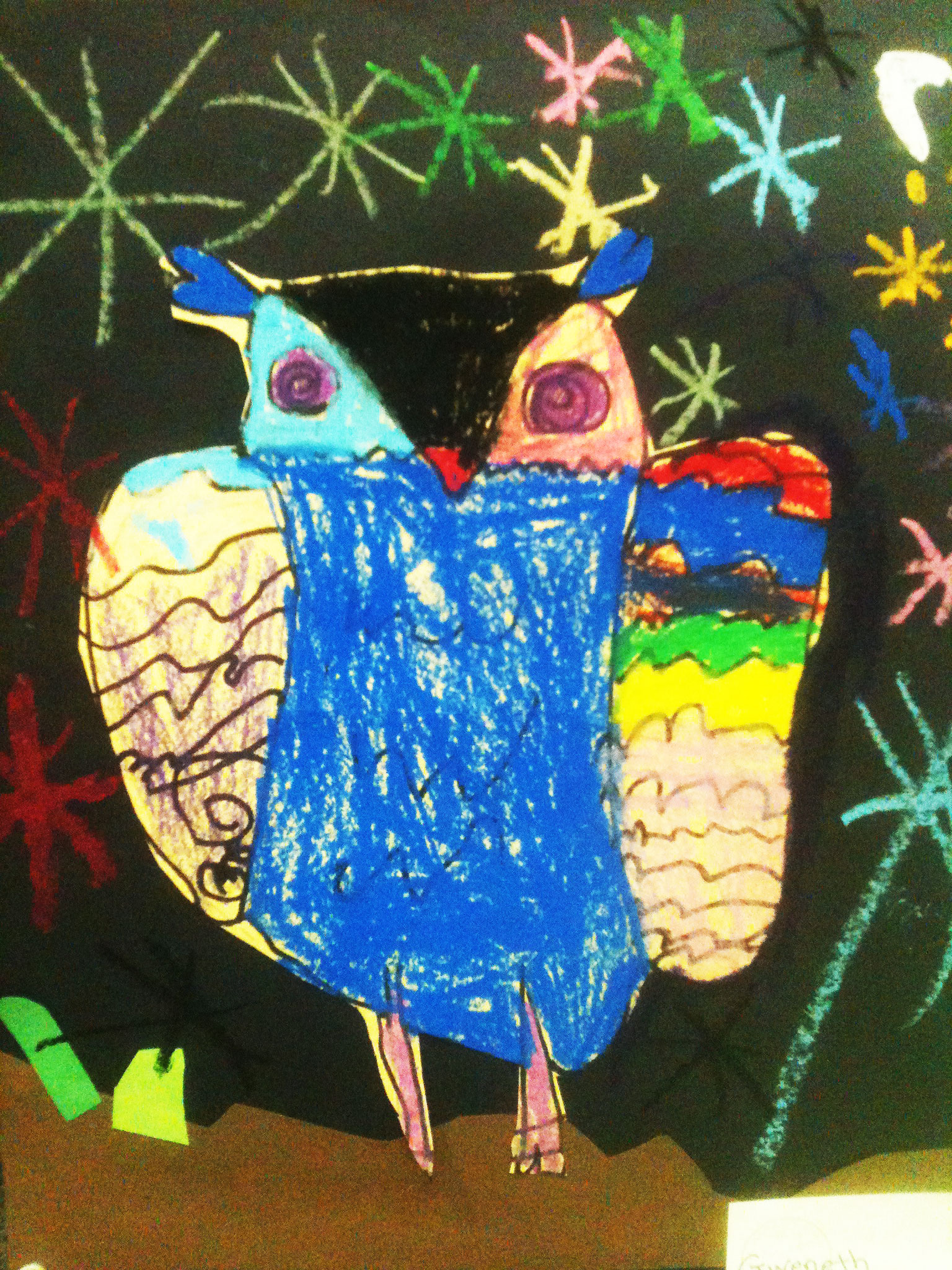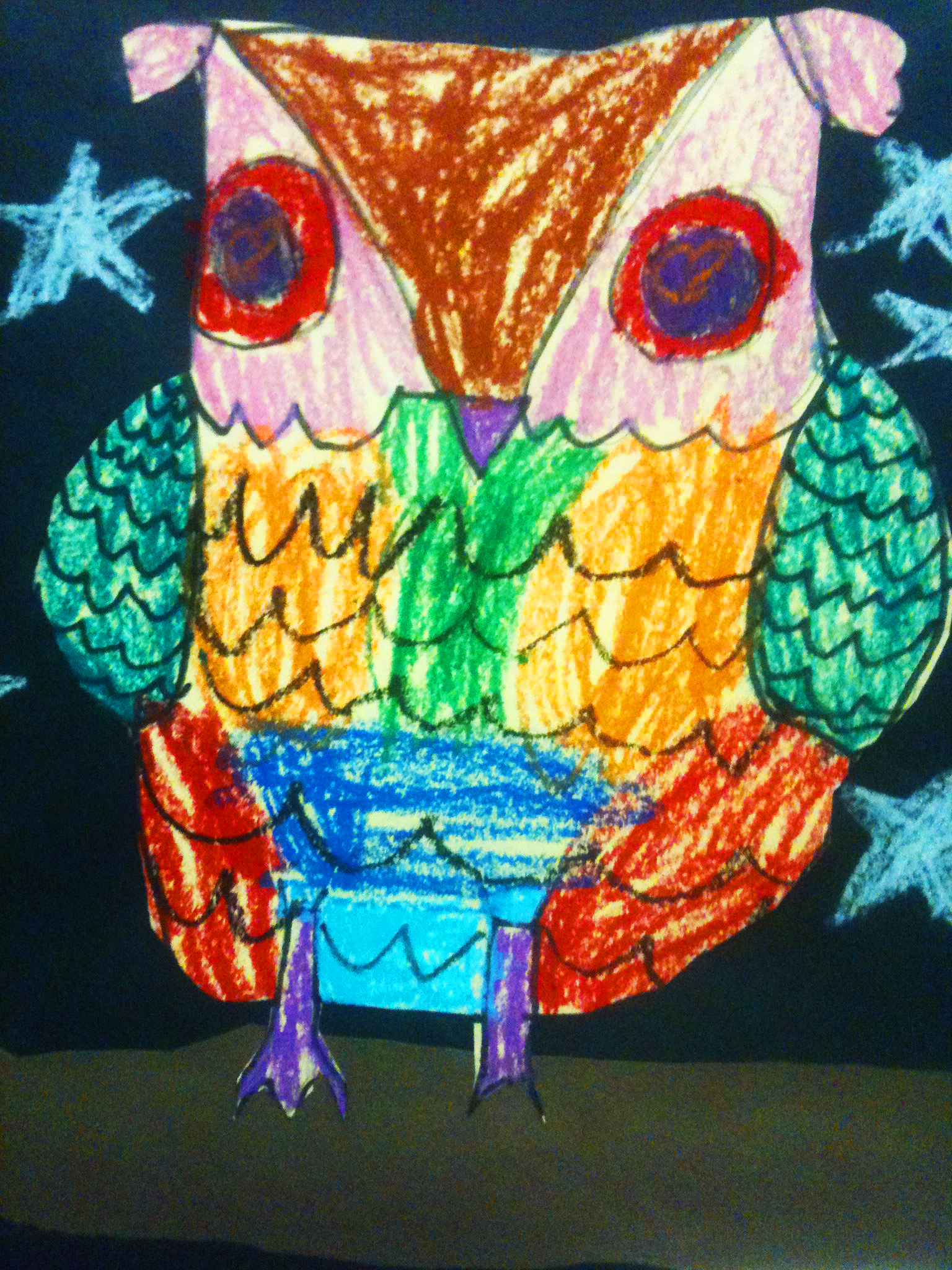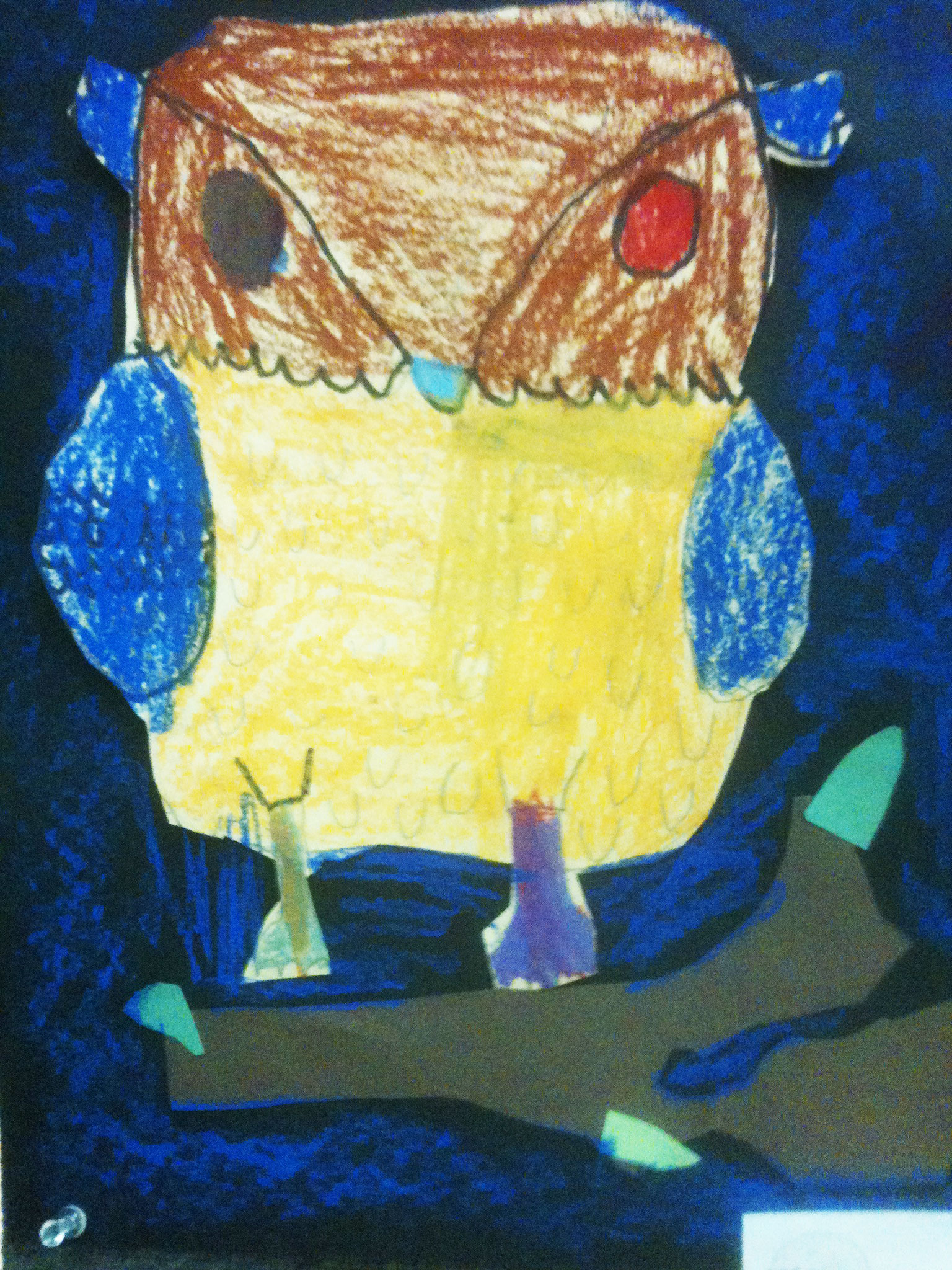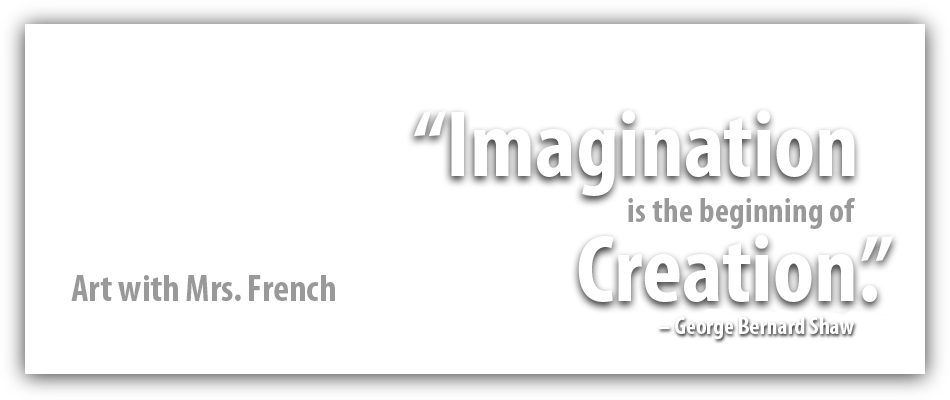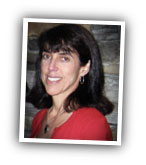The art processes of printing, drawing and collaging were explored for this project our kindergarten and first grade students just completed.

Step 1, Printing: After reading the ever-popular story "The Rainbow Fish", students dipped paper towel roll ends into white tempera and printed their ocean background on blue construction paper.
Step 2, Drawing: Next, we talked about and viewed photos of fish to learn what all fish have in common; eyes, tails, fins and scales. Together we practiced drawing a big fish that filled up our white drawing paper. Students could then color the fish with crayon as they desired.
Step 3, Collaging: When they had a fish they were happy with, students learned how to collage, or glue, small pieces of lots of different colored paper onto their fish, ending with a one shiny silver scale. The fish were then cut out and glued onto the printed backgrounds, adding seaweed or other ocean details completed the artwork. Aren't they great? Click on any image to see more fish!




 Thursday, May 14, 2015 at 10:05AM
Thursday, May 14, 2015 at 10:05AM 
